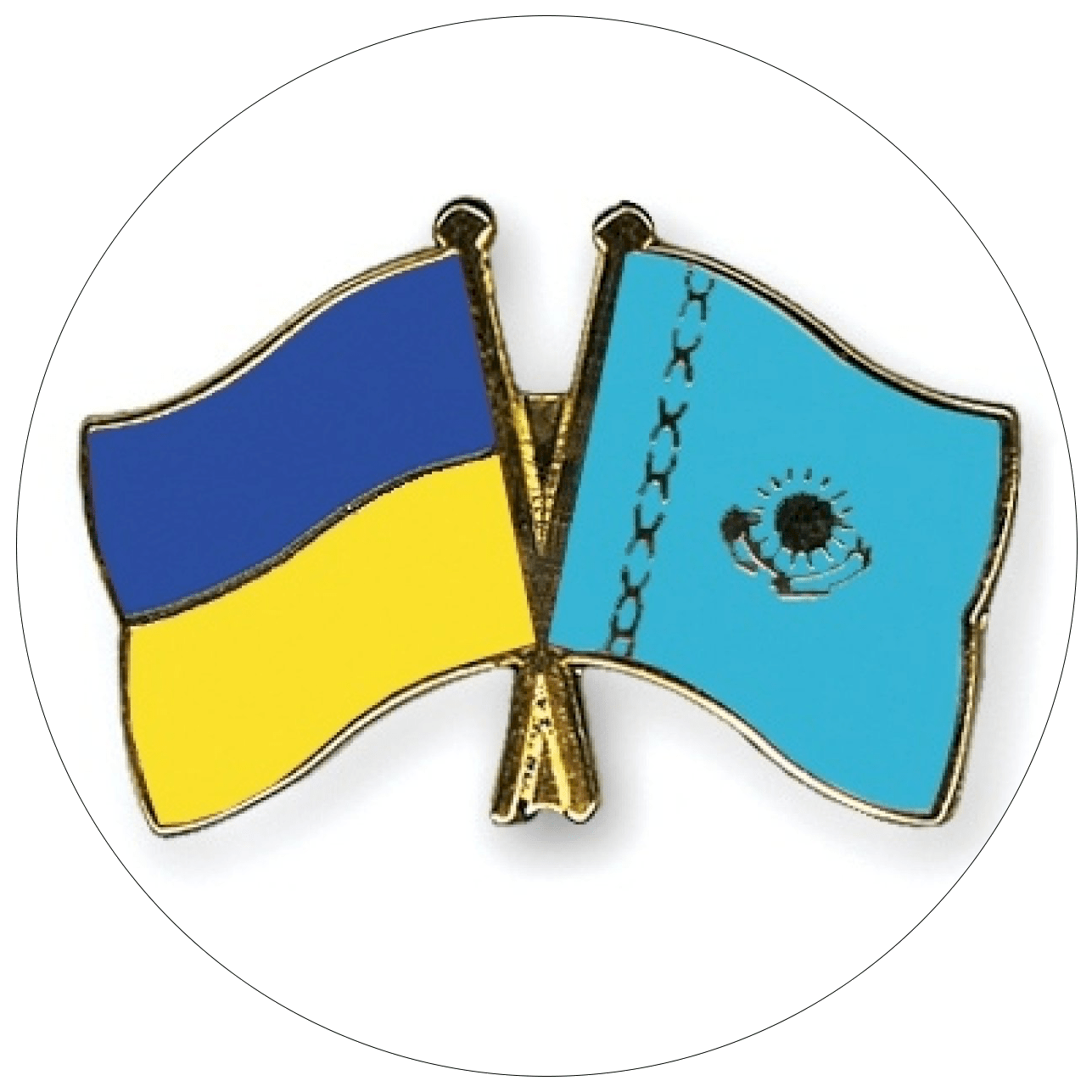Results of industry for the year
The previous year was notable for a number of important and quite interesting trends within domestic industry, particularly the oil and gas sphere. The most import development has been the transfer from extraction side to that of production.
Akzhol Sadeshov
As was noted on 1st November by President Nursultan Nazarbayev, concerning diversification of the economy, “The country is creating an alternative economy, and does not wish depend on natural resources.” He sees the proof for this in the fact that the consolidated charter capital of those organizations engaged in development work at present totals KZT114 bln. More than 116 projects, totaling US$2.5 bln are being implemented with the assistance of those organizations. “Due to the fact that we have made such change, this year for the first time, investment into the extraction industry, while on the extraction side investment grew 78%,” said the head of state. The President also stated that during this year Kazakhstani companies spent 45% more funds for the import of capital equipment than in the previous year. “As a result, we have made a change in direction from the natural resource [extraction] sector to the processing industry, as well as that of machine building,” added the President.
At the beginning of 2005, directors of the National Statistics Agency held a press conference of the results in social and economic development for the previous year, at which they noted two major achievements: economic growth (GDP volume finally exceeded its 1990 level), and a positive demographic trend. We are unsure as to how demographic trends fared in 2005, but economic growth certainly has not let us down. All of this is thanks to our main natural resource – black gold.
As is known, all state revenues from oil and gas are major components of the national budget. This primary financial document of the nation is created on the basis of the prognosis of the future cost of oil on the world market. The price for which is expected to be US$49 per barrel of Brent crude.
The profitable portion of the national economy has always attracted much interest on the part of investors. The beginning of 2005 was characterized by the continuation of core disputes between Turgai Petroleum and its Canadian and Russian shareholders. In addition to this, a commission under the Ministry of Energy and Natural Resources discovered serious flaws in the operations of PetroKazakhstan Kumkol Resources (PKKR). The court hearings between Turgai Petroleum and Russia’s Lukoil on the one side, with PetroKazakhstan Inc. and PKKR on the other, ended in the favor of Kumkol and its Russian shareholder. In the end, the Canadian company absolutely denied all accusation made towards them, and made multiple statements on the biased attitude of the government concerning their company. At the same time, the authorities of Kazakhstan also had claims on the operations of PetroKazakhstan, Inc. As was stated many times, the reason for this latter conflict related to the seasonal increases in prices for fuels and lubricants, breaches of regulations pertaining to fair competition, the burning of gas condensate, and others.
Aside from this, the government was suspicious that some of the other huge companies committed the same economic crimes, breaching of customs law, among others. During a number of similar conflicts, some analysts began raising the question of how these disagreements would affect the investment climate of the country.
However, over the year investors’ mood failed to worsen. So, in August PetroKazakhstan, Inc. announced that its assets would be put up for sale, which was followed by the jump in share price by 17%, and capitalization reached US$2.8 bln. Among the potential buyers were Chinese National Petroleum Corporation (CNPC), the national Indian oil and gas firm, ONGC, and Russia’s Lukoil. The final winner in the competition became CNPC International Ltd., which holds petroleum assets in Aktobe and Mangistau Oblasts. The government of Kazakhstan also entered the fight for the available assets, and made statements relating to its intentions to maintain control over the strategically important Shymkent Oil Refinery. Right before the transaction’s completion, first the Parliament, and later the President, hastily approved amendments to existing legislation, which gives the government the right to the privileged buyout of oil assets on the secondary market. As a result, a memorandum of mutual understanding was signed between state-owned KazMunayGas and CNPC, which has become the finale of the transaction battle of the year. According to the memorandum, KazMunayGas receives a sufficient block of shares of PetroKazakhstan, which is necessary to preserve the strategic interests of Kazakhstan against the subsoil user. KazMunayGas has also received the right to co-manage the Shymkent Refinery (the majority of which belonged to PetroKazakhstan before) and the sales of petroleum products on a par basis.
Overall, the previous year was characterized by enhancements in the state’s position as regards the oil assets of the country. Besides the above-mentioned transaction, a similar situation occurred in the spring, when BG Company sold its shares in the Northern Caspian Project. Before the state reentered this project, similar amendments were made to the applicable legislation, and the government began negotiations with the shareholders in the Kashagan field. By the time the state completed its transaction with BG, the Kazakhstan had purchased half of BG’s share in this field (a total of 8.33% in the project). Noteworthy is the fact that the purchase of one more oil asset by CNPC from the PetroKazakhstan’s investors looks even more successful as regards the launching of the Atasu-Alashankow oil pipeline at the end of the year. For our country, the pipeline project will allow a decrease in our pipeline dependency on our northern neighbor to a certain degree. Before the launch of this Sino-Kazakhstani project, the only export routes for Kazakhstan were the Tengiz-Novorossiisk (Caspian Pipeline Consortium – CPC) and Atyrau-Samara, both of which go through the territory of Russia.
Aside from the Chinese investors, the Russian ones were pretty active as well. After Lukoil’s failure regarding the Tub-Karagan oilfield, the Russians did not become frustrated over the oil resources of Kazakhstan. Therefore, this summer Lukoil Overseas purchased 65% of shares, along with an option for a further 1.3%, in Nelson Resources Ltd., which is participating in four oil extraction projects in Kazakhstan. Before this event, in the summer a long awaited product sharing agreement (PSA) for the Kurmangazy oilfield was signed. The agreement for “Mutual Operations Development of Hydrocarbon Resources of the Kurmangazy Oilfield” was concluded between the companies KazMunaiTeniz and Rosneft-Kazakhstan.
The year of the cockerel has also been memorable for the development of the idea on the Initiative on Transparency Development in the Extraction Industry, which later on was reflected via a memorandum. This document was signed by members of the Mazhelis, the 24 largest oil and gas companies, and the Minister of Energy and Natural Resources. Besides, the government worked out one more memorandum on social partnership for covering the existing demand for fuels and lubricants on the internal domestic market.
Particularly salient is the fact that with regards to the refining of hydrocarbons, Mr. Nazarbayev stated the new requirements of the investment policy of the country already back in May. That is, from now on foreign investors will not just be able to extract, but must also refine hydrocarbons in order to receive a production license. As a result, the previous year was quite successful for the petrochemical industry. Production volumes have increased, and the government has provided assistance to certain market participants, and so on.
Experts have said that the major strategic raw material for the domestic petrochemical industry is gas. As per the results of the first 11 months of 2005, natural gas production totaled 23.7 bln cubic meters, or 129.7% on the same period in the previous year. Karachaganak Petroleum Operating Company, TengizChevroil LLP, AktobeMunayGas and Tolkyneftigas have played a major role in the increase of natural gas production as compared with the previous year.
In the metallurgic industry, the beginning of the year is remembered for the fire that occurred at the sheet-rolling shop of the only steel mill in Kazakhstan, Ispat-Karmet (Mittal Steel Temirtau). Due to this, the main production line was stopped, and in February production of rolled steel decreased by one-third. During the first six months, growth in production volume was observed in all regions of Kazakhstan, excepting Karaganda Oblast, where the volume decreased by 18.3%, the major contribution being February’s fire. Even considering the generally positive dynamics, this example demonstrates an existing structural weakness in the industry. An accident at one of the largest plants affected the overall industry dynamics for a considerable period. Our nation’s economy has been designed in such a way that less than 20 big plants more than 60% of industrial output. Therefore, over the first half of the year, Kazakhmys Corporation, a virtual monopolist in the sphere of copper production in Kazakhstan, registered a decrease in the production growth of refined and spooled copper. The reason for this was the fact that the corporation is continuing to extract ore of varying qualities using a strategy of subsoil conservation, which translates into providing the company with a reliable ore reserve.
At the end of spring, a conflict began between one of the largest Kazakhstani plants for iron production, Sokolovsko-Sarybayskoye Mining, Smelting and Production Plant (SSMSPP) and the Magnetogorsky Metallurgical Plant (MMP). In May, MMP accused SSMSPP, its primary supplier of iron ore (70% of total supply), of collusion with MMP’s Russian suppliers in a price-setting arrangement designed to put pressure on MMP. According to SSMSPP, MMP made such accusations about “pressure” in order to drive down supply prices so as to take advantage of the then currently high prices on the global markets.
Panorama newspaper has reported that according to the Eurasian Industrial Association (EIA), which unites a number of the largest metallurgical plants in Kazakhstan (including SSMSPP) there has not been any price setting, and that SSMSPP acted independently. One of the reasons for the stoppage of deliveries to MMP, which initiated the scandal, was Russia’s cancellation of the 5% import tariff applied to iron ore, which came into effect on 13th May. This created unequal conditions for the Kazakhstani plant in comparison with Russian suppliers. SSMSPP made a decision to increase its prices to MMP, which then made the demand that prices be dropped by 40%. As a result, both these giants decreased production volumes for quite some time. In addition, one more domestic giant, Mittal Steel Temirtau, which expressed the desire to purchase the output of SSMSPP at a price significantly lower than its previous one, became involved within the conflict. In the opinion of EIA, Ispat-Karmet decided to take advantage of a difficult situation. EIA expressed its view that the actions against its member were agreed upon after the recent meeting in London of MMP’s owners and Mittal Steel. However, the situation normalized in August, and SSMSPP began shipping it sore to MMP.
At the same time, this period was characterized by preparatory work of industrial companies for the purpose of entering the Western capital markets, which evident in the production increases and implementation of investment projects. At the beginning of the year, almost all the giants of Kazakhstani industry declared their plans to increase output levels. Particularly, Kazakhmys is planning to build the largest smelting plant in the world – Aktogai-Aidarlinsky – with a capacity of 50 mln tons of ore per year. The plant will produce refined copper, iron and aluminum industrial products.
This copper monopolist was the first to be brave enough to venture onto the international markets, a step that turned out to be quite successful. At the beginning of October, an IPO of Kazakhmys shares occurred on the London Stock Exchange (LSE). Kazakhmys’s issue became the second largest for the LSE in 2005. Total capitalization of the company was US$5 bln. Kazakhmys was able to receive US$1.17 bln for one-fourth of its shares.
Other Kazakhstani companies have decided to repeat the successful experience of Kazakhmys with regards to accessing foreign financial resources. At the same time, the government announced the sales in 2005 of state-owned blocks of shares in a number of large industrial enterprises, including those in the big gold mining companies.
So in April a big domestic gold producer, Charaltyn, announced its intentions to fully consolidate its assets with the Canadian company, Eurasia Gold Corporation’s, as well as to carry out an IPO on a Western exchange. According to a representative of this company, the future funds will be directed for the realization of Kazakhstani project for increased ore extraction and gold production. Already in August, Charaltyn signed an agreement of intent with Eurasia Gold regarding a stock swap, whereby Eurasia Gold’s shareholders would receive stock in Charaltyn. This transaction will allow Charaltyn to move onto the largest market for mining companies, the Toronto Stock Exchange (TSE), as well as enabling the company to significantly increase its resource base.
In May, Kazatomprom attracted a syndicated loan for the amount of US$150 mln for pre-export financing, which funds will be used for financing the production and export of natural uranium concentrate (Triuranium octaoxide – U3O8), as well as the support for exploration and development of uranium reserves. In September, Kazatomprom made an announcement on its plans for 2006 regarding their debut issue of Eurobonds (US$166 mln) within the framework for realizing an intensive development program, as well as for receiving a credit rating.
In August, the government’s 5% share in Kazzinc was divided into two lots, and sold on the Kazakhstan Stock Exchange (KASE).
In the same month, Floodgate Holding B.V. bought out the remaining 15% of state-owned shares in Vasilkovskoye Zoloto.
In September, the coal giant, Bogatyr Access Komir, announced its plans to borrow US$400 mln for the development of the Bogatyr coal mine.
On 24th November, KEGOC Company signed a credit agreement with Development Bank of Kazakhstan (DBK – KZT6.97 bln), as well as EBRD and a syndicate of foreign banks (US$87.8 mln) for the “North-South” project. The funds are to be directed for the implementation of the second and third stages of the project.
At the beginning of December, it became known that the company, KazakhGold, the founder of the mining and metallurgical concern, Kazakhaltyn, which produces gold in Akmola Oblast, sold 25% of its shares on the LSE. In listing its shares on the exchange, the company managed to attract US$196.5 mln. Through this action, it became the second Kazakhstani company to list on the LSE.
In the same month, the Filipino company, Pasar Holding, Inc., purchased 22.65% of the state-owned block of shares in Kazinc for KZT14.74 bln. The Filipino investors accepted all terms of the commercial tender, particularly the obligation to build a copper smelting plant and an electrolysis one in East-Kazakhstan Oblast. The total capacity will be 70,000 tons of refined copper per year.
In conclusion, the previous year was quite interesting with regards to the division of markets, especially in the oil and gas sector, and through the increase of investment into industrial production. 2005 was characterized by the prevalence of huge transactions, and the debut of Kazakhstani industrial giants onto the foreign capital markets. The trend towards reorientation of the national economy away from a natural resource base to one of production is continuing. For the first time in Kazakhstani and CIS history, economic growth has proceeded with the development of industrial clusters, permitting the introduction of products with a high level of value added.

 Поддержать
Поддержать
 Smart
Smart  Культурная среда
Культурная среда  Общество
Общество  Политика
Политика  "Законы XII таблиц"
"Законы XII таблиц"  Бизнес
Бизнес  Досье и мифы
Досье и мифы  Асар в Украине
Асар в Украине 


Комментариев пока нет